The Fullblood Red/Black Wagyu (“FBX”) Animal
Many Wagyu breeders refrain from breeding Red Wagyu/Akaushi to Black Wagyu. While we concur that there is little to be gained from introducing Red Wagyu/Akaushi genetics into a herd of Black Wagyu, we believe there are several important reasons for introducing Black Wagyu genetics into a herd of Red Wagyu/Akaushi.
Fullblood Wagyu come in two major forms outside Japan: (1) The Fullblood Black Wagyu animal (“FBB”), which in Japan is referred to as “Japanese Black”, of which there are three major sub-strains (Tajima, Kedaka and Fujiyoshi); and (2) the Fullblood Red Wagyu animal (“FBR”), which in Japan is referred to as Red Wagyu, Kumamoto Red and Akaushi (which means “red cow” in Japanese), and which outside Japan are referred to as both Red Wagyu as well as Akaushi. In Japan, these two substantially different (genetically) categories of animals are considered different breeds, but outside Japan the major Wagyu breed associations (American and Australian) consider the two types of animals to both be “Wagyu”, but differentiate them with a “category” within their registries. The Akaushi Association operated by Heartbrand Beef considers FBR (which they call “Akaushi”) to be a separate breed compared to FBB.
When animals of these two substantially different categories of Wagyu are bred one to the other, the offspring are generally referred to as a “Red/Black Wagyu” animal (“FBX”). On the first breeding of a FBR to a FBB the offspring always inherit one copy each of a black and red hide color gene, and since the black gene is always dominant over the red gene in cattle, the first generation FBX offspring always have a black hide. When a first-generation FBX, which carriers one copy of each color gene, is bred, there is a 50% probability of its offspring inheriting the red hide color gene. Therefore, if a first-generation FBX (or any FBX that carriers one copy of each color gene) is bred to a FBR their is a 50% probability of the offspring inheriting the red color gene from the FBX parent. Thus, if such an FBX animal carrying one copy of the red color gene is bred to a FBR (which will always have two copies of a red hide gene) there will be a 50% probability of the offspring inheriting two copies of the red color gene (in which case they will have a red hide), and a 50% probability that they will inherit one copy of each color gene (in which case they will have a black hide since the black hide color gene is always dominant), and such offspring will have 75% FBR genetics and 25% FBB genetics since offspring always inherit, on a generally random basis, one copy of each gene from each parent. When a first-generation FBX is bred to another first-generation FBX (both of which will be 50% FBR and 50% FBB genetics, and both of which will carry one copy of each color gene) there is a 25% probability of the offspring inheriting double red hide coat color genes, and the offspring will have 50% FBR genetics and 50% FBB genetics.
When a second, third or higher generation FBX animal has a black hide (it could have one or two copies of the black hide coat color gene), at Rocking 711 Ranch we refer to such animal as a “Fullblood Red/Black Wagyu With Black Hide” (“FBXB”) and when the animal has a red hide (it must have two copies of the red hide coat color gene or it would not be physically red color since the black color gene is dominant) we refer to such animal as a “Fullblood Red/Black Wagyu With Red Hide” (“FBXR”).
As can be seen in picture below, which is of a young 2-year-old second-generation FBXR bull with 75% Red Wagyu and 25% Black Wagyu genetics, once an FBX animal inherits two copies of the red hide gene, the animal has a hide color that is the same as a FBR Wagyu animal, but otherwise carries 25% FBB Wagyu genetics. When bred to FBR females, all calves out of this bull will have a red hide and will be 87.5% Red Wagyu genetics and 12.5% Black Wagyu genetics. The Black Wagyu genetics in this bull’s pedigree include top carcass-trait animals including Sanjirou (Michifuku over Suzutani), Fukutsuru-068, Kitaguni Jr. and Kikuyasu-400.
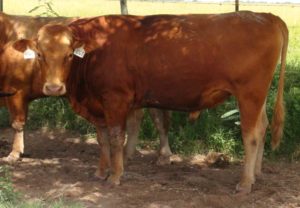
We believe there are compelling reasons for creating the FBXR animal. These reasons include:
- Extremely Limited FBR Gene Pool: The entire FBR/Akaushi population outside Japan has descended from an extremely small number of animals that were exported from Japan, which makes inbreeding a huge issue, especially for larger commercial operations that are not able to maintain exact breeding records and separate females into numerous different breeding groups to be bred by a compatible bull. The genetics of only 21 animals were exported from Japan. But some of these were not used for breeding outside Japan and therefore the genetic pool of DNA for the FBR/Akaushi breed is based on less than 21 foundation animals. And many of the 21 exported animals were relatively closely related if the pedigrees are traced all the way back into the Japanese registry, so FBR offspring are often highly inbred even if the sire and dam are both original exported foundation animals. The genetics of 200 FBB were exported from Japan. So the opportunity to expand the gene pool of red hided Wagyu animals through the use of the FBB animals is substantial.
- Selective Breeding For Best Of Both: Generally speaking, the FBR Wagyu animal (as compared to the FBB Wagyu animal) is regarded as being faster growing, somewhat larger at maturity, having superior maternal characteristics, and having better pasture performance. There are several different major genetic lines of FBB Wagyu, and so making general statements is difficult, but generally speaking, compared to FBR Wagyu, FBB animals are generally regarded as having superior marbling, marbling fineness, and ribeye size to carcass weight ratio, but such positive attributes are somewhat offset by slower growth, smaller mature size, poorer “pasture performance” and poorer maternal characteristics, including milk production and maternal instinct, at least for the Tajima line of FBB.
Note that the attributes of the FBB described above are generalized, as there is substantial difference in the major genetic lines of FBB, and the largest FBB sires of the Kedaka and Fujioshi lines are actually larger at maturity than the average FBR animal. The point emphasized here is that while there is less benefit to be derived from influencing an FBB herd by using FBR genetics, there is meaningful benefit to be derived from influencing a FBR herd by using FBB genetics. By measuring and using data of offspring for selective breeding, it should be possible to utilize FBXR animals (a mix of FBB and FBR, with double red hide coat color genes and therefore red hide) to accomplish the following within a red hided Wagyu herd:
- Keep the Red Hide Color: By using a FBXR sire (a mix of FBB and FBR genetics, but carrying double copies of the red hide coat color genes), when breeding a herd of red hided females, all offspring will be red hided. This is desirable for those who prefer a completely red hided herd.
- Reduce Inbreeding: As mentioned above, the FBR animal is a substantially different animal, genetically, compared to the FBB animal. So breeding a FBR to a FBX (or vice versa) is always an out cross. The FBR breed outside Japan consists of genetics of less than 21 animals that were exported from Japan, compared to the genetics of approximately 200 FBB animals having been exported from Japan. The current worldwide herd of FBR animals outside Japan suffers from substantial inbreeding issues, and sire selection for FBR herds is complicated by this inbreeding issue.
- Blend of FBR and FBB Genetic Characteristics: By breeding FBXR genetics into a FBR herd, the FBR herd will over time turn into a herd of FBXR animals (through the retention of replacement heifers), and the genetic diversity of the herd will increase substantially. The herd could eventually have even more genetic diversity than a typical FBB herd due to the combination of the genetics. And the herd will have inherited, on a random basis, one gene at a time within each breeding, some of the genetics of each Wagyu animal type. This random inheritance, on a gene-by-gene basis, will result in an ability, through measurement and selective breeding, to select for the desirable characteristics of the FBR and FBX type animals.
- Improve Carcass Quality: It is generally widely accepted that the best FBB carcass genetics are better than the best FBR carcass genetics. This widespread belief is supported by numerous data points that we will not debate or try to support here because we feel this is a well-founded truth, other than to mention that this notion is supported by Australian EBV data, the Washington State National Wagyu Sire Summaries based upon progeny tests, and the fact that no FBR animal has ever won top carcass honors at the All Japan “Zenkoku Wagyu Noryku Kyoshin-kai (全国和牛能力共進会) (the “Wagyu Olympics” held every 5 years in Japan since 1966). If true, as we believe it is, then it should be possible, through the introduction of FBB genetics into a FBR herd, to create superior carcasses from a red-hided Wagyu herd, which herd would technically be referred to as a FBXR herd rather than a FBR herd since FBB genetics would exist within the animal even though the animal has a red hide.
- Achieve Hybrid Vigor: While FBB and FBR and not substantially different breeds (although they are considered separate breeds in Japan), they are meaningfully different from the perspective of genetic background. Therefore, there should be at least a small degree of heterosis, or “hybrid vigor” that would result from the out-cross. Heterosis generally results in faster growth, larger size, healthier, longer-lived animals.
Carcass Quality Of FBX Wagyu Animals:
One of the arguments made by FBB “purists” against breeding FBB with FBR is that carcass quality will be negatively impacted by such breeding. There is very little data available to support, either positively or negatively, this argument. It is apparent that there is little to be gained by introducing FBR Wagyu genetics into a FBB Wagyu herd because the FBB genetic diversity is approximately 10-fold that of the FBR genetic diversity, and because of the three major genetic “strains” of FBB Wagyu genetics, it is possible to achieve most of the attributes available from introducing FBR genetics to a FBB herd, such as size, milk/maternal, etc., by using “best of class” FBB sires to accomplish such. But we believe, as stated above, that there are substantial benefits to be gained by introducing FBB genetics into a FBR herd. The pictures and other information set forth below are from posts made online by several Wagyu breeders that have represented such carcass pictures to be from FBX animals (either fullblood or percentage Wagyu animals sired by FBX sires, but in all cases, the Wagyu genetics in the animal was represented to be FBX). This is limited data, which data is not “scientific”, and is not in the form of documented, formal progeny tests, but if believed to be truthful, this data does show that it is possible to achieve high quality carcasses from FBX animals. While this information does not, in and of itself, conclusively prove that the breeding FBB to FBR animals will improve carcass quality compared to a FBR animal, this information does at least show that it is possible to obtain excellent marbling from FBX animals.
The three pictures below were posted on Facebook by Joe Allen Hoegh, and were represented to be ribeye pictures from three separate steers, all F1/50% Wagyu sired by an FBX Wagyu bull (FB15242), which bull was sired by the famous FBB sire Michifuku out of a FBR cow sired by the FBR sire Hikari over a cow sired by the FBR sire Judo. The steers were represented to be out of Brangus cows.
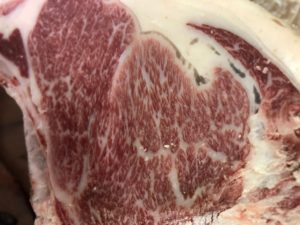
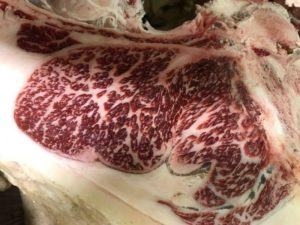
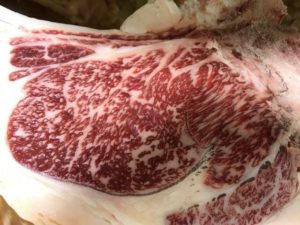
The three pictures above show excellent marbling that is perhaps BMS 7, BMS 8 or BMS 9 in terms of marbling score, and with relatively good marbling fineness. While not as good as some top FBB carcasses, this marbling and marbling fineness is excellent. And the fact that these steers are out of Brangus dams, which have Brahman influence (well recognized to hinder marbling), makes the apparent FBX sire’s influence for these three steers, in terms of marbling and marbling fineness, even more impressive.
The pictures below are from a Facebook post made by JR Hayden in which he stated: “A project I started years ago finally paid off with my best carcasses. This was the worst out of 35 head killed. I’ve analyzed a lot of F1 carcasses over the past 6 years, and I’ve finally found the perfect combination of Red/Black Wagyu sire, Exon 5 BB, crossed to a registered Red Angus cow with good marbling traits. Roughly 350 days on grain fed ration if counting preconditioning before going to feedlot.”
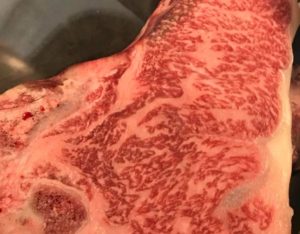
The picture below is from a Facebook post by Kevin Hayden from August 2018 in which he stated the picture was from a FBX animal sired by the FBR sire Red Emperor out of a FBB cow sired by Michifuku/Fujiko in turn out of a cow with Itoshigenami, Michifuku and Fujiko, and that the animal was 28.5 months of age at harvest.
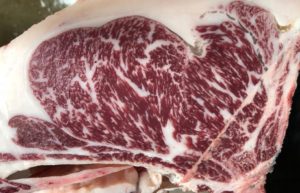
Heartbrand Beef has well proven that the FBR/Akaushi animal can achieve very good carcass quality, including excellent yield grade and marbling, with shorter time-on-feed and total age of the steer, as compared to FBB animals. But they have not been able to show (nor do they try to show) that FBR carcasses can achieve BMS 9+ levels of marbling, as is regularly achieved with FBB animals. Other data, such as Australian Breedplan EBVs and the Washington State National Wagyu Sire Summaries, which are based upon progeny tests using reference sires, have shown that FBR are inferior to FBB in terms of marbling and marbling fineness when fed under the same conditions. We are aware of no tests or data sets that show that FBR are superior to FBB in terms of marbling and marbling fineness. So, the logical conclusion is that a red hided Wagyu animal, who’s genetic makeup consists of some high marbling FBB genetics, as well as FBR genetics, could be superior to FBR Wagyu animals in terms of these two important traits. And the genetic diversity gained from such FBB genetic influence should make such breeding stock animals more vigorous, healthy and long-lived. For these reasons, we believe there is a place for the red hided FBXR in the Wagyu marketplace.
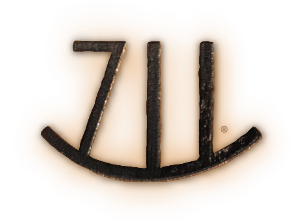
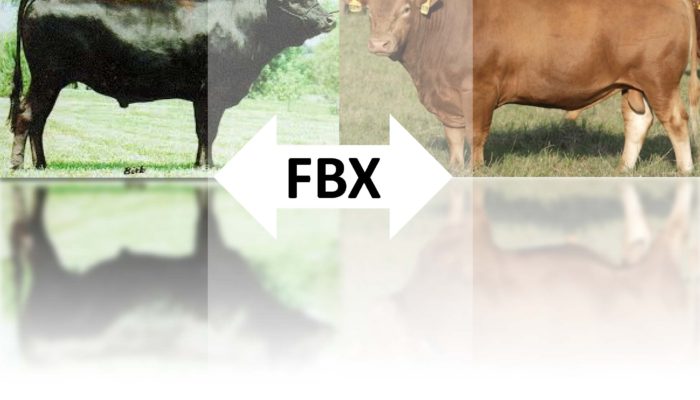
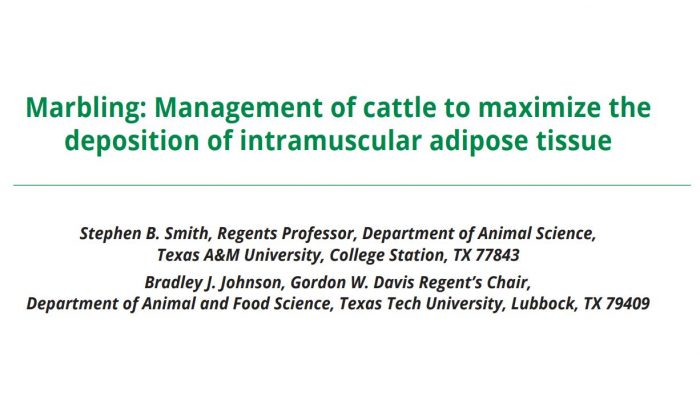
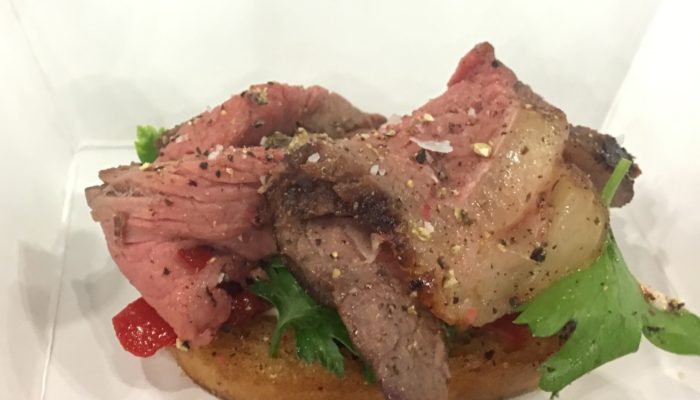
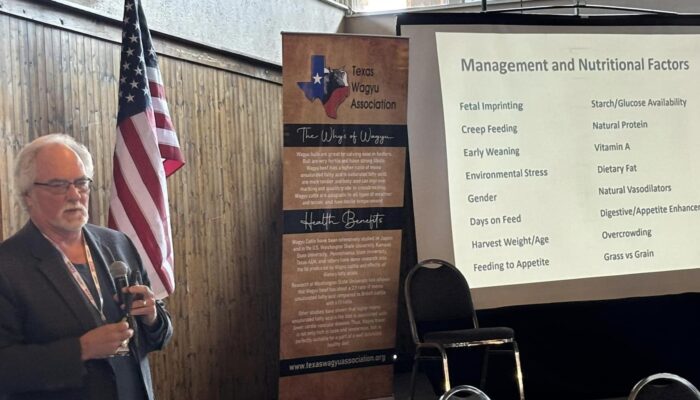
Very informative and valuable article . Well researched and a contribution to serious Wagyu breeders. Well done.